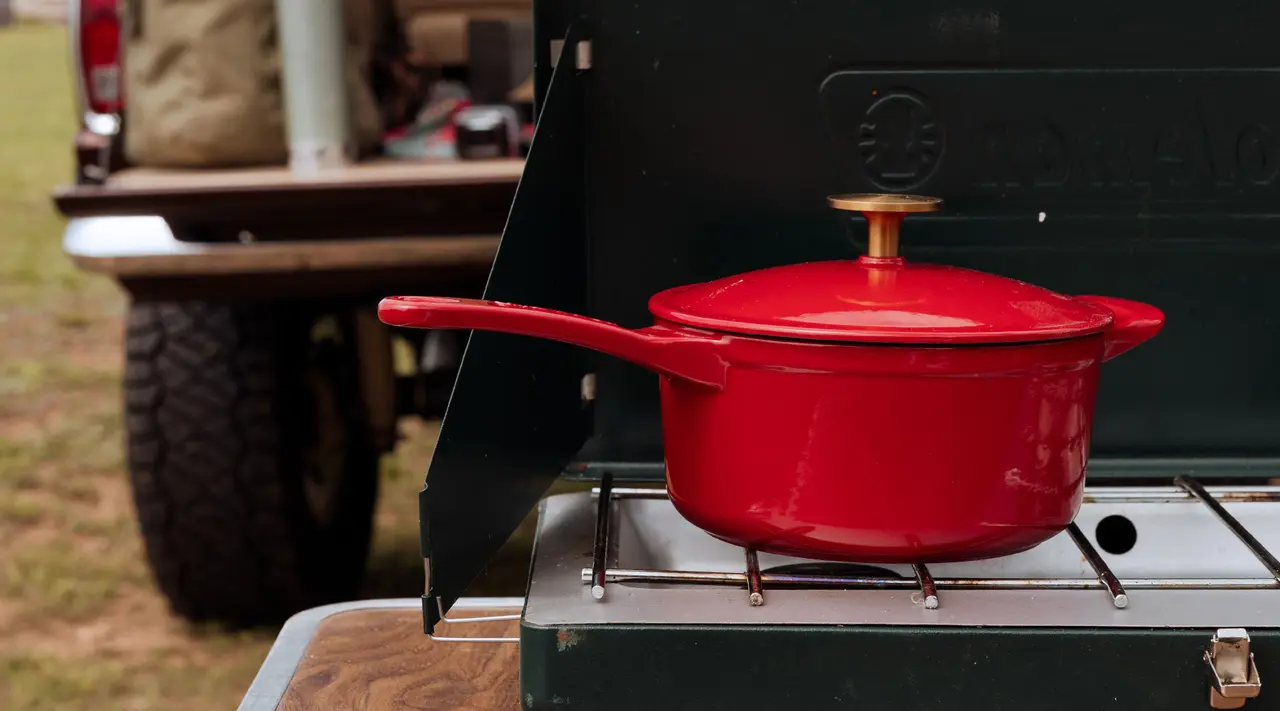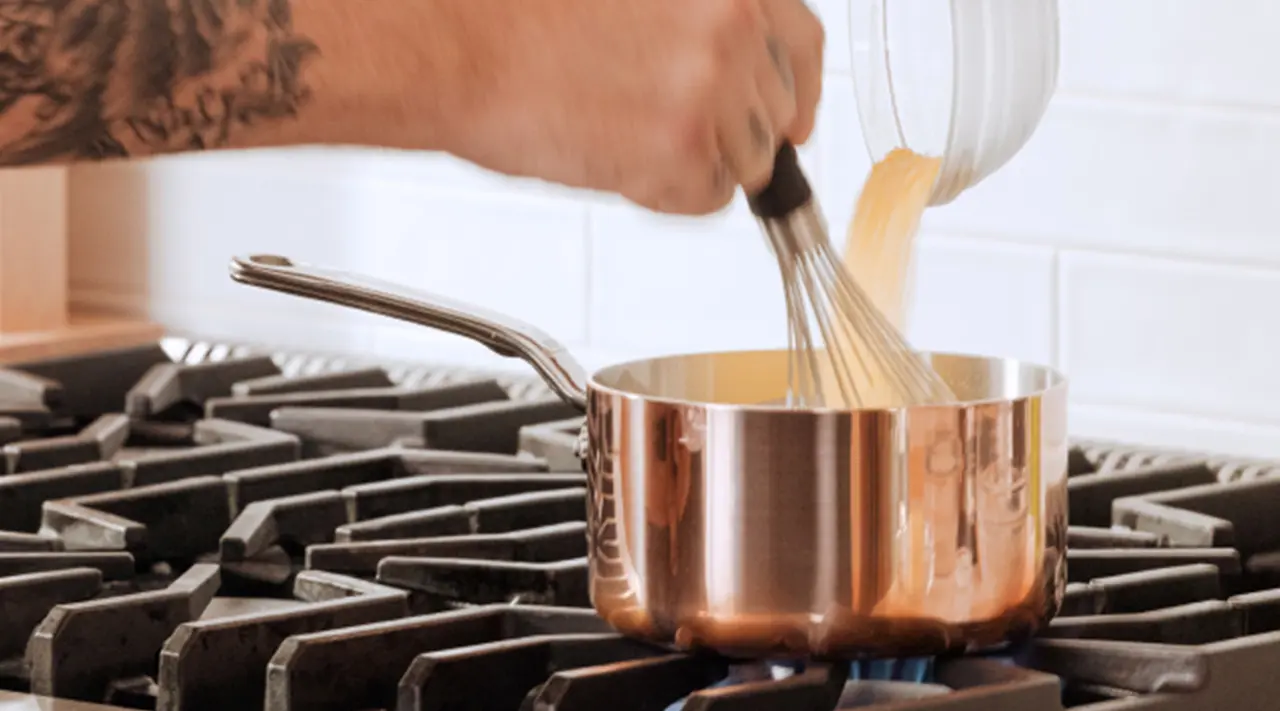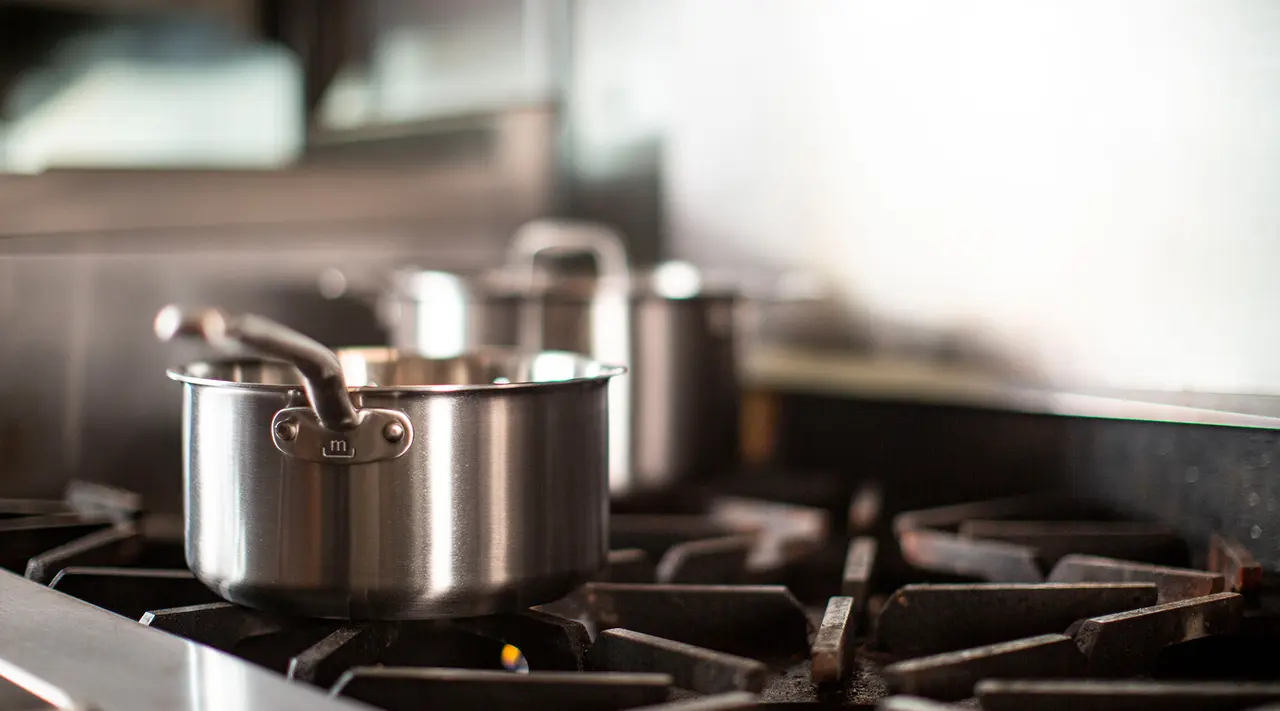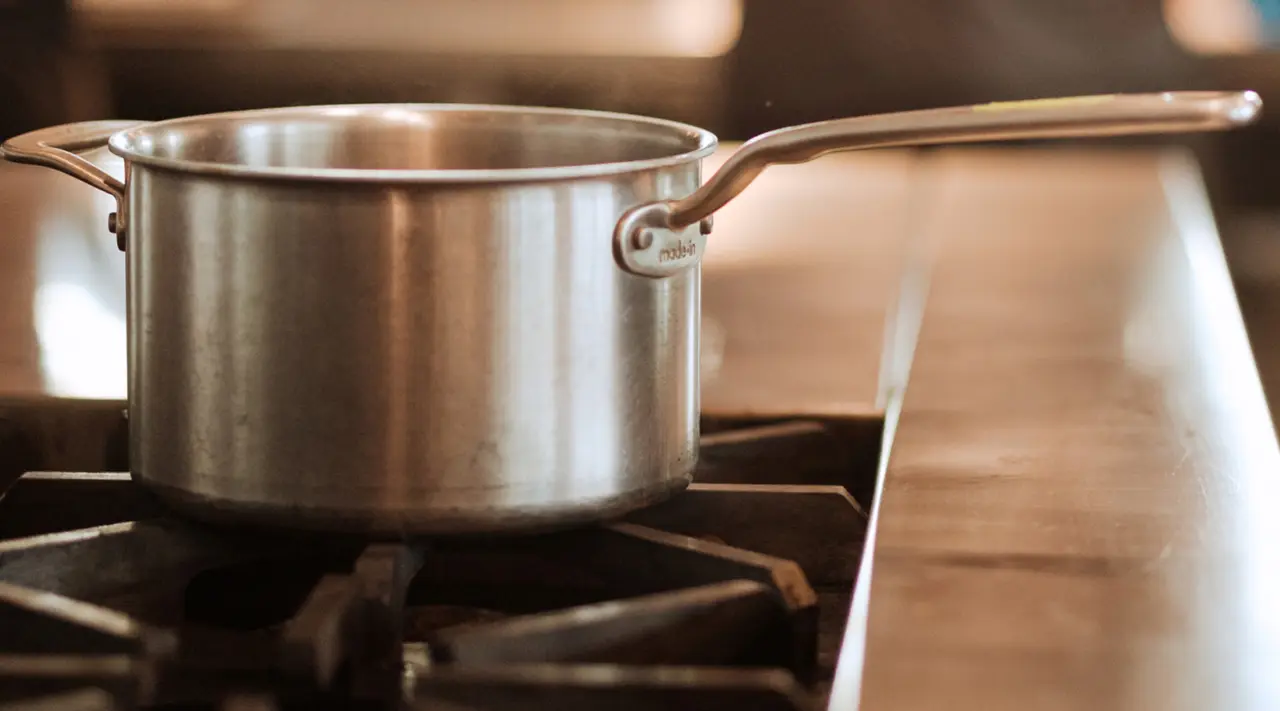Saucepans are among the most common cookware styles, used daily by home cooks and professional chefs alike. They’re immediately recognizable for their small circumference, tall and straight edges, long handle, and tight fitting lid. Their design is best suited for tasks like simmering, boiling, and reducing liquids and sauces. However, the same can be said for sauciers, rondeaus, and stock pots, making it difficult to decide what pan to use and when.
Here, we’ll outline the design, uses, and construction of saucepans, and why no kitchen—or Cookware Set, for that matter—is complete without one.
What Is a Saucepan?

A saucepan is a small piece of cookware with a flat, circular base, tall and straight sides, an extended handle similar to that of a frying pan, a tight-fitting lid, and is available in a range of sizes, most commonly between 2-4 quarts. Saucepans are typically made from stainless steel and will almost always be deeper than they are wide, which increases their total capacity and ensures rapid, even heating of the contents.
Saucepans come in a range of materials, from enameled cast iron to copper to non stick. Premium saucepans are commonly constructed from stainless steel due to its ability to withstand high heat, conduct it evenly, and retain it efficiently. When choosing the right stainless steel cookware for your kitchen, make sure you’re looking at cladded options made from premium raw materials.
What are Saucepans Commonly Used For?

True to their name, saucepans are most frequently used to make and reduce sauces. That said, they can do so much more: small-batch braising, confit, rice, and even deep frying, depending on the quantity or yield of your recipe.
- Sauces: A saucepan is great for making both sweet and savory sauces. This is because the tall edges allow for water to evaporate, thickening and concentrating the reduction. No matter what sauce you’re making—tomato, béchamel, velouté, hollandaise, or even a custardy crème pâtissière—a saucepan will never lead you astray.
- Confit: The most famous type of confit begins with duck cooked low and slow in its own rendered fat. In addition to being deliciously luxurious, it’s a method of preservation. Increasingly, it’s become common to confit garlic, tomatoes, and other vegetables, usually in olive oil. Whatever you choose to confit, a saucepan is the perfect vessel due to its depth. To properly confit, you want to fully submerge the ingredients in fat or liquid. Think of it like deep frying, but at a bare simmer.
- Rice (and other grains): There are a million ways to make it and everyone has their own preferred method, but a saucepan with a tight fitting lid can reliably get you to fluffy rice, couscous, quinoa, and more. Of course, it’s also great for things like risotto, which must be built more slowly and stirred constantly.
How Does a Saucepan Differ From Other Pans?

A saucepan’s primary distinguishing feature is its size. They are, on average, much smaller than other types of cookware. Their limited capacity and tall profiles are the only things that would prevent you from using them as you might use a saute pan, a saucier, or a stock pot. For small recipes, they’re extremely utilitarian and can often be interchangeable with other pots and pans.
While it might not always be the ideal choice for things like pan-frying or searing, a saucepan is generally able to do almost everything a saute pan, stock pot, or saucier can do—with the caveat that results may vary. Here's a glance at how it compares to some popular shapes.
Saucepan vs. Stock Pot
In many ways, a saucepan is simply a scaled down version of a stock pot (more on that in our guide to stock pots vs. saucepans). Both have a circular base, straight edges, and are deeper than they are wide, all to facilitate the simmering of soups, stews, stocks, and broths. However, stock pots are typically intended for much larger volumes of liquid, generally from around 6 quarts to 12 quarts.
Additionally, where a saucepan typically has one elongated handle, a stock pot has two small looped handles on either side to make carrying and transporting easier. Both saucepans and stock pots have tight fitting lids with a handle on top, and can be made of the same materials: stainless steel, aluminum, copper, enameled, and sometimes even non stick.
Saucepan vs. Saute Pan
As covered in our guide, saucepans and saute pans are remarkably similar, aesethetically and otherwise. They both have a round circular base, tall straight sides, and a long handle. Both come with a lid, and are similar in terms of maximum capacity (often between 2-4 quarts).
However, where a saucepan is taller than it is wide, a saute pan is wider than it is tall. For example, our 4QT Saucepan has a cooking surface diameter of 7.5” and a depth of 5”, while our 3.5 QT Saute Pan has a cooking surface diameter of 9.5” and a depth of 2.5”.
In practice, this makes our saute pan better suited to pan-frying, searing, and (you guessed it) sautéeing than a saucepan, as its shallower depth allows liquids to evaporate more easily, while the saucepan is better suited to simmering and reducing sauces and gravies.
Saucepan vs. Saucier
The venn diagram comparing saucepans vs. sauciers is a near perfect circle. The primary difference between the two is that the saucepan is much more ubiquitous in home kitchens, while the saucier tends to fly under the radar and is more commonly found in restaurant kitchens.
Additionally, the saucier has rounded, sloping edges that soften the transition from base to walls. The benefit of this is that it makes whisking and stirring sauces easier, as there are no nooks, crannies, or corners that your utensil can’t reach—meaning no more stuck, burnt, or unincorporated edges.
On the other hand, saucepans tend to be slightly taller and narrower in profile with a defined difference between the bottom and walls of the pan, giving saucepans the edge when it comes to reducing and simmering sauces. They’re more or less on par with sauciers in terms of capacity, but may run slightly smaller. Compared to our 2 and 4QT Saucepans, we offer 2, 3, and 5 QT Sauciers.
Saucepan vs. Frying Pan
Like saucepans, frying pans are absolutely fundamental pieces of cookware for any home cook, and are among the most commonly recognizable types of cookware. Between the two you can do just about anything, which is why they’re usually paired in barebones starter cookware sets. A saucepan will reliably take care of most small-scale simmering and boiling needs, while a frying pan can handle most of your pan-frying, sauteing, and searing.
Unlike a saucepan, a frying pan is wider than it is tall, has sloping sides, and does not come with a lid. With a frying pan, the goal is usually to encourage ingredients to cook through, take on color, and undergo the Maillard reaction (a lid would trap steam and inhibit this in particular). Liquid may be used for deglazing a frying pan, but it’s not usually the primary ingredient. Conversely, a saucepan is designed to circulate heat evenly through liquid.
Do I Need a Saucepan?

Simply put: yes, you do. It’s the most basic piece of cooking equipment available, and without one your culinary options are going to be extremely limited.
A good saucepan will allow you to experiment with all manner of soups, stews, curries, sauces, pastas, grains, glazes, jams, gravies, mashed potatoes, even quick pickles. There’s a reason every starter cookware set includes a saucepan, why every Airbnb has at least one saucepan, and why campers will often bring just one small saucepan: they might just be the most versatile tool at your disposal.
Ready to Shop?
Now that you have a thorough understanding of what a saucepan is, how it differs from other types of cookware, and why it’s integral to a well-stocked kitchen, you’re ready to upgrade your kitchen.
Whether you prefer easy-to-use non stick, classic stainless steel, rugged enameled cast iron, or luxurious copper, we have something suited to the way you like to cook, plus tons of recipes to get you started as soon as it's out of the box.























